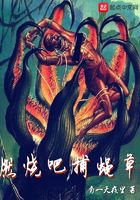In addition to their other organs, flying insects are furnished with wings. Some insects are dipterous or double-winged, as the fly;others are tetrapterous or furnished with four wings, as the bee; and, by the way, no insect with only two wings has a sting in the rear.
Again, some winged insects have a sheath or shard for their wings, as the cockchafer; whereas in others the wings are unsheathed, as in the bee. But in the case of all alike, flight is in no way modified by tail-steerage, and the wing is devoid of quill-structure or division of any kind.
Again, some insects have antennae in front of their eyes, as the butterfly and the horned beetle. Such of them as have the power of jumping have the hinder legs the longer; and these long hind-legs whereby they jump bend backwards like the hind-legs of quadrupeds. All insects have the belly different from the back; as, in fact, is the case with all animals. The flesh of an insect's body is neither shell-like nor is it like the internal substance of shell-covered animals, nor is it like flesh in the ordinary sense of the term; but it is a something intermediate in quality. Wherefore they have nor spine, nor bone, nor sepia-bone, nor enveloping shell; but their body by its hardness is its own protection and requires no extraneous support. However, insects have a skin; but the skin is exceedingly thin. These and such-like are the external organs of insects.
Internally, next after the mouth, comes a gut, in the majority of cases straight and ****** down to the outlet of the residuum: but in a few cases the gut is coiled. No insect is provided with any viscera, or is supplied with fat; and these statements apply to all animals devoid of blood. Some have a stomach also, and attached to this the rest of the gut, either ****** or convoluted as in the case of the acris or grasshopper.
The tettix or cicada, alone of such creatures (and, in fact, alone of all creatures), is unprovided with a mouth, but it is provided with the tongue-like formation found in insects furnished with frontward stings; and this formation in the cicada is long, continuous, and devoid of any split; and by the aid of this the creature feeds on dew, and on dew only, and in its stomach no excretion is ever found. Of the cicada there are several kinds, and they differ from one another in relative magnitude, and in this respect that the achetes or chirper is provided with a cleft or aperture under the hypozoma and has in it a membrane quite discernible, whilst the membrane is indiscernible in the tettigonia.
Furthermore, there are some strange creatures to be found in the sea, which from their rarity we are unable to classify. Experienced fishermen affirm, some that they have at times seen in the sea animals like sticks, black, rounded, and of the same thickness throughout;others that they have seen creatures resembling shields, red in colour, and furnished with fins packed close together; and others that they have seen creatures resembling the male organ in shape and size, with a pair of fins in the place of the testicles, and they aver that on one occasion a creature of this description was brought up on the end of a nightline.
So much then for the parts, external and internal, exceptional and common, of all animals.
8We now proceed to treat of the senses; for there are diversities in animals with regard to the senses, seeing that some animals have the use of all the senses, and others the use of a limited number of them. The total number of the senses (for we have no experience of any special sense not here included), is five: sight, hearing, smell, taste, and touch.
Man, then, and all vivipara that have feet, and, further, all red-blooded ovipara, appear to have the use of all the five senses, except where some isolated species has been subjected to mutilation, as in the case of the mole. For this animal is deprived of sight; it has no eyes visible, but if the skin-a thick one, by the way-be stripped off the head, about the place in the exterior where eyes usually are, the eyes are found inside in a stunted condition, furnished with all the parts found in ordinary eyes; that is to say, we find there the black rim, and the fatty part surrounding it; but all these parts are smaller than the same parts in ordinary visible eyes. There is no external sign of the existence of these organs in the mole, owing to the thickness of the skin drawn over them, so that it would seem that the natural course of development were congenitally arrested; (for extending from the brain at its junction with the marrow are two strong sinewy ducts running past the sockets of the eyes, and terminating at the upper eye-teeth). All the other animals of the kinds above mentioned have a perception of colour and of sound, and the senses of smell and taste; the fifth sense, that, namely, of touch, is common to all animals whatsoever.
In some animals the organs of sense are plainly discernible; and this is especially the case with the eyes. For animals have a special locality for the eyes, and also a special locality for hearing: that is to say, some animals have ears, while others have the passage for sound discernible. It is the same with the sense of smell;that is to say, some animals have nostrils, and others have only the passages for smell, such as birds. It is the same also with the organ of taste, the tongue. Of aquatic red-blooded animals, fishes possess the organ of taste, namely the tongue, but it is in an imperfect and amorphous form, in other words it is osseous and undetached. In some fish the palate is fleshy, as in the fresh-water carp, so that by an inattentive observer it might be mistaken for a tongue.













